Many actors fall into typecasts, whilst others try their best to wear many hats when it comes to their roles. But very few actors are capable of the undeniable versatility of Jack Nicholson. In a career spanning 55 years, he has played everything from a comic book villain, a murderous madman, a patient in a mental institution, the president, a hot-headed Colonel, a mob boss, and many more. His career has spanned genres, even appearing in more than one romance during the later years of his filmography. And with each film, his performances remain as strong, complex and as developed as the last. Considered one of the great Hollywood actors, he represents an artist that is unafraid of portraying all the facets of humanity – even the darkest ones.

The Cry Baby Killer (1958)
A movie typical of its era, this Roger Corman-produced schlocky late-50s crime thriller isn’t exactly the greatest acting debut, but even the masters must start somewhere. Revealing the secret lives of rebellious teen jazz beat punks, we find Nicholson as the eponymous Cry Baby Killer (aka Jimmy Wallace) who begins to panic after believing he has committed manslaughter during a fight.
As the police, public, and press surround the small hut Wallace has taken refuge in, he realizes he is now in the company of a kitchen worker and a mother with her baby, who he takes as hostages. Down to pure fear, we see Nicholson’s character descend into a violent and paranoid madness – a leitmotif of Nicholson’s future career of playing lunatics, murderers, and criminals.

Easy Rider (1969)
Eleven years later, and after a spate of TV roles, Nicholson’s performance in Easy Rider rapidly made him a star. A spark ignited the New Hollywood Cinema of the 1970s which saw the likes of Paul Shrader, Martin Scorsese, John Cassavetes, and Dennis Hopper take the reins behind the camera and hold up a lens to the young viewers who craved independence and controversy over the Hays code-sanitized studio system fluff released in the “golden age” of cinema.
Nicholson seemed to feel at home within the genre characterized by disenfranchised males struggling with the American Dream as many of his films during this era are deemed to be key texts in the development and history of the American New Wave.
His Easy Rider character, George Hanson, is a lawyer who is struggling increasingly with the hypocrisy of the world around him whilst using it to his own advantage to get both himself and our traveling duo out of trouble after being arrested. Once released, he takes a swig of whisky and raises a toast to D.H Lawrence – who famously wrote about the effects shifting modernity has on the human psyche and our relationships.
This toast holds the key to the film as Easy Rider asks us – is there always a better life out there? The flower power cultural regression of the 60s was a rejection of post-war ideals like individualism and capitalism; however, the grass isn’t always greener on the other side. Nicholson’s performance allows that question to sit within his character, a man who has privilege and comfort in his surroundings but has never been past the state line to Mardi Gras. Freedom is a fantasy for a regular “dude” like Hanson, who escapes his shackles in an unmistakable symbol of the small-town American dream – a gold football helmet.
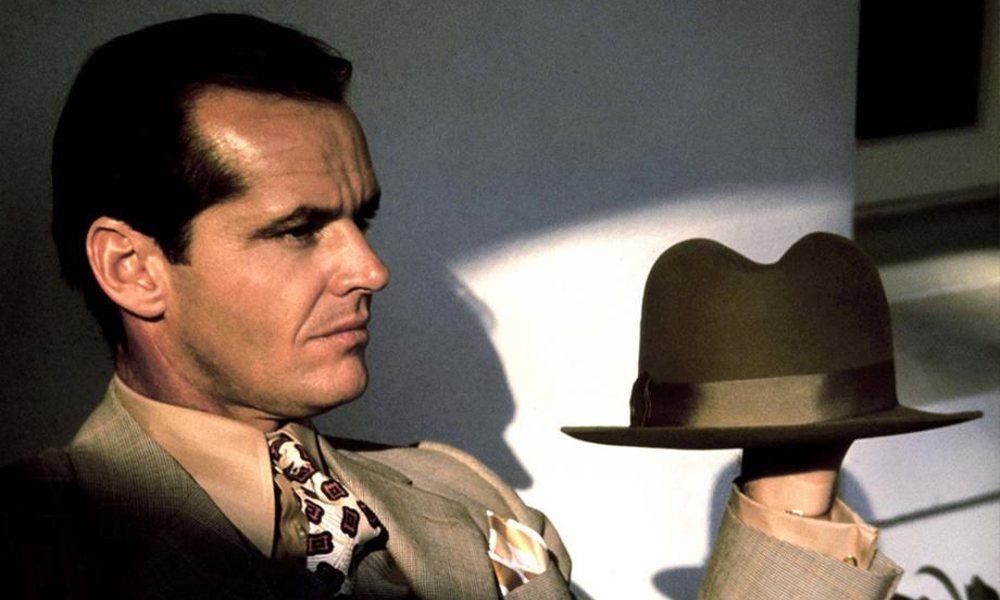
Chinatown (1974)
In almost direct contrast to Easy Rider, Chinatown plays on nostalgia with its neo-noir stylings and loose depiction of the ‘water wars’ that took over Los Angeles in the early twentieth century, with Nicholson transforming into a hard-boiled private eye who makes his living uncovering infidelities.
His performance as Jake Gittes won him a nomination for Best Actor at the 1975 Academy Awards, a BAFTA, a Golden Globe, and a string of critics’ choice awards. This awards season acted as a sign of the things to come in Nicholson’s long-term career, with him currently sitting as the male actor with the most Oscar nominations in film history.
When dealing with a period drama, Nicholson’s acting sits firmly in the realm of pastiche rather than parody as we watch his disillusioned gumshoe fall deeper into a world of deceit, lies, and corruption. We see the case through his eyes – an intentional decision by Polanski – and his desire to uncover the seemingly endless mystery and protect the archetypal femme fatale (played by Faye Dunaway after numerous casting changes) as it becomes a simple quest for truth, and as our villain states “You may think you know what you’re dealing with, but, believe me, you don’t.”
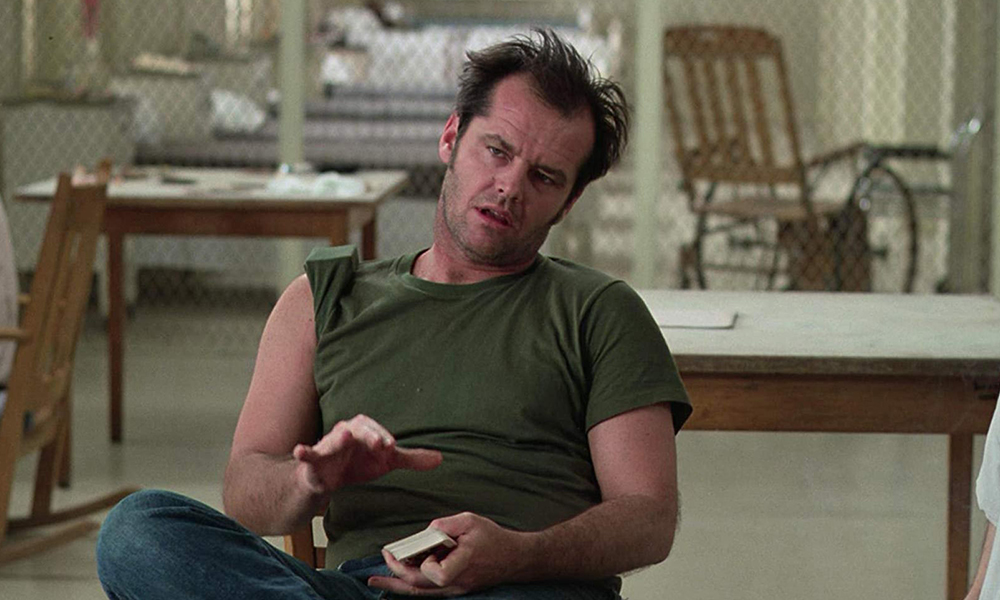
One Flew Over the Cuckoo’s Nest (1975)
Thinking he is taking the easy option in choosing to be incarcerated in a mental institution as opposed to a jail, Nicholson’s Randall McMurphy is a man whose motivations change constantly throughout the course of the film. Whilst his actions almost always fall on the side of causing disruption, he develops friendships with the other patients of Oregon State Hospital, putting himself in danger as a method of empowering his newfound comrades before meeting his tragic end.
Whilst McMurphy should be in jail doing hard time, his morally grey character finds purpose in encouraging the men around him to experience the real world and to reject the notion that they may well be stuck in the hospital forever. This objectively “bad man” transforms into a preacher of freedom, whilst others coerce and scare to maintain their power. Once again it is the complexity that Nicholson brings to his characters that keeps their stories from being one-note or static – they are never wholly good or bad, but products of the environment around them.

The Shining (1980)
Speaking of the environments in which characters exist, The Shining deals with how one man is slowly crushed by the pressures of the world and its expectations of him learns to adapt to the murderous impulses and isolation of a strange hotel where nothing is as it seems.
Whilst beginning the film as an all-smiles father and husband, it is clear from the get-go that there is something darker to Jack Torrance, which is soon confirmed by the reveal of his alcoholism and attacks of violence towards his son. Initially reclusive in order to continue his manuscript, Torrance descends deeper into introspection and darkness with a push from the Overlook Hotel and its ghostly inhabitants.
Nicholson provides one of the key performances in the horror genre during his stand-off with his wife Wendy, as he swings a bat at her whilst menacingly looming towards her up the stairs – this former family man with a dark side has become consumed with the parts of himself he wished to escape from. The Overlook symbolizes the parts of our psyche that we are not proud of yet cannot leave behind – our past is our past, but for Jack Torrance, who knows how far back that goes.
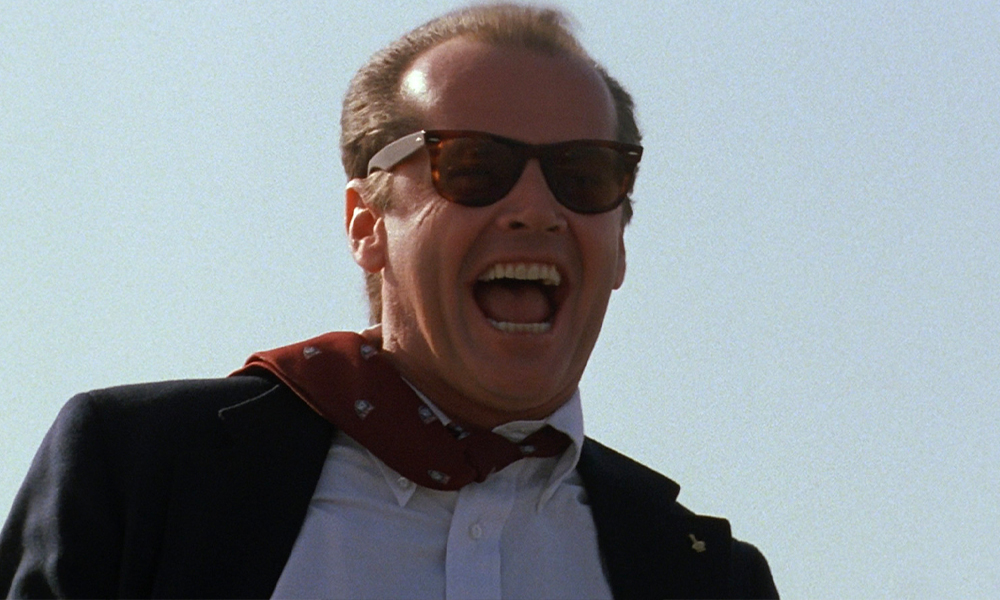
Terms of Endearment (1983)
From the early ’80s until the 2000s, Nicholson mostly took a step away from the dark roles he had become known for, opting for lighter characters – giving us a full view of the comedic timing that we’d only glimpsed through the veil of madness and corruption.
This career turn brought equal merit, as Nicholson won his second Oscar, and a clean sweep of “The Big Four” for his supporting role in dramedy Terms of Endearment, the James L. Brooks film that focuses on the complex relationship between a mother and daughter over the course of 30 years.
Taking on the part of retired astronaut Garrett Breedlove, which was written for Burt Reynolds and passed on by both Paul Newman and Harrison Ford, we see a new side to Nicholson – one less at odds with his reported ladies’ man persona. Critics heralded his performance for its ability to bring comedy and romance to an otherwise heart-breaking story that ends with an incredible scene from the film’s leads.
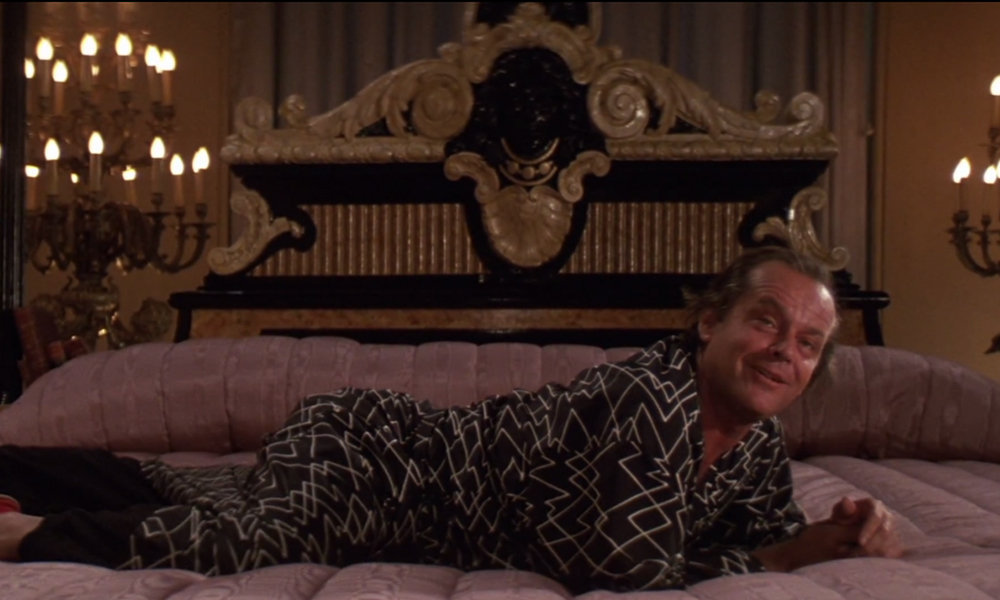
The Witches of Eastwick (1987)
Continuing on his course for comedy, Nicholson tackled a role which he’s borrowed many elements from before – The Devil. Answering the call for the perfect man after 3 witches perform a ritual, he sets his sights on seduction, perversion, and manipulation.
Nicholson is at his comedic best, personifying his self-proclaimed “horny little devil” whilst clad in silk pajamas and a performance so exuberantly physical it would make Jim Carrey look like a statue. His campy portrayal of The Devil, or Daryl Van Horne in this case, truly shines in the scenes where he successfully seduces the 3 witches by both disgusting and beguiling them in equal measure, each of the women vying for his affections until they realize just how strong his powers are.
Wholly scene-stealing, Jack Nicholson fully rounds up his quest for versatility in an exclamatory fantasy which is a far cry from the counter-culture bad boys of his filmography.
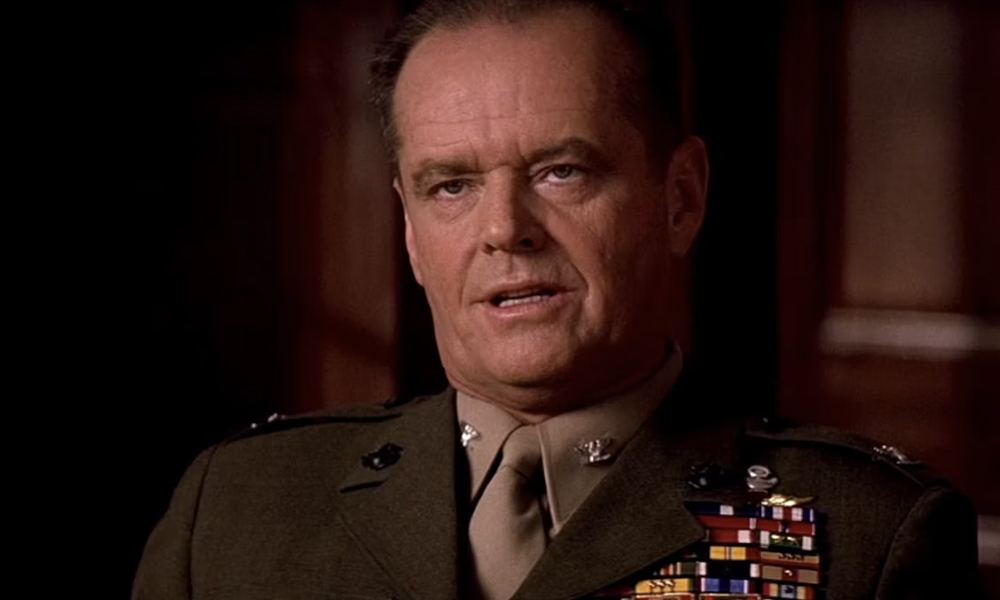
A Few Good Men (1992)
Everyone knows Nicholson’s iconic line from this courtroom drama – but some may fail to realize how it represents the crux of the story in which multiple lives hang in the balance due to a court case in which two marines have killed one of their fellow soldiers. The film presents a tete-a-tete as Tom Cruise’s young plea lawyer Daniel Kaffee fights to prove the marines’ innocence and place blame onto Nicholson’s domineering Colonel Nathan Jessup, a cruel leader who appears to play by his own rules.
Nicholson plays Jessup with the coolness of an apex predator until the vital flaw in his armor is revealed – he states with pride that his marines would never disobey him – which leads to the question if he has his men so well-conditioned, why would they act without his approval? This revelation leads to one of the tensest scenes in cinema, and a well-deserved Oscar nomination for Nicholson, a prize which was lost to Gene Hackman’s performance in Unforgiven (1992).

The Departed (2006)
With any Scorsese film, you know you are in for incredible performances and spectacular writing – and this is evident from the first scene as we are introduced to the seedy underbelly of Boston by none other than the film’s enigmatic star, Irish mob boss Frank Costello, who is masterfully played by Nicholson.
Skipping between terror-inducing, comedic, sensitive, and always utterly complex – this performance feels like both a love letter to the possibilities of cinema and a swan song for Jack Nicholson, who would go on to take less intense roles from this point in his career.
Frank Costello is a man of multitudes. Over the course of the movie, we see him morph between his many personas – a debt-collecting gangster, a surrogate uncle who looks out for the local kids, a talented artist, a violent and prejudiced criminal, and a man who indulges in vulgar comments about all of those around him. This versatility brings us to the question – just how does Nicholson do it? Throughout his career, he has had an uncanny ability to make logical fallacies possible and make the complexities of human nature easy to digest, where some actors may seem like they’re attempting to play 3 characters at once.
The Verdict
Whilst this is by no means an exhaustive list of Nicholson’s works – omitted are incredible performances in Something’s Gotta Give (2003), Mars Attacks! (1996), As Good As It Gets (1997), and of course his iconic portrayal of the Joker in Batman (1989). However, that in itself is a testament to Nicholson’s acting ability. You can take a look at just 9 of his 78 roles and see the full width and breadth of expression and complex characterization that makes up his body of work. Whilst he has claimed that he will not be taking on any more roles, a return to the screen would be welcomed with open arms. However, should his 50-year career be at an end, we can be sure that he has rightfully claimed the title of the most versatile actor in cinema.